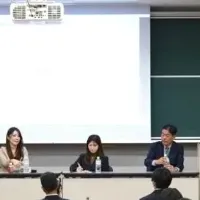
Macao Science-1 Satellites Showcase the Power of Joint Innovation Under 'One Country, Two Systems'
Macao Science-1 Satellites: A Milestone in Space Research
The recent launch of the Macao Science-1 satellites signifies a landmark achievement in the realm of space science, reflecting a collaborative effort between the Chinese mainland and Macao. This project, celebrated not only for its technological advancements but also for its embodiment of the 'one country, two systems' policy, showcases how unity can drive remarkable scientific progress. According to Zhang Keke, the chief scientist behind the initiative, the support from engineers and scientists on the mainland has been instrumental in its success.
The Macao Science-1 program, which represents the inaugural space science satellite initiative jointly developed by the two regions, was launched successfully on May 21, 2023. Utilizing a Long March-2C carrier rocket, it took off from the Jiuquan Satellite Launch Center. Over its operational period, the satellite has completed more than 8,000 Earth orbits and has been performing exceptionally, collecting a wealth of high-precision data.
Zhang, who also serves as vice president of the Macao University of Science and Technology, stated that this project is not just a technological endeavor, but a strategic move that enhances Macao's influence on a global scale. The upcoming Macao Science-2 satellite project, approved by local authorities, aims to expand upon the successes of its predecessor and is anticipated to be launched in late 2026 or early 2027.
Innovations in Geomagnetic Research
At the heart of the Macao Science-1's mission is its groundbreaking research into Earth's geomagnetic field. Notably, the mission has produced China's first WM³ 4D Earth magnetic field model, which leverages high-precision data collected by the satellite. This model is expected to revolutionize various scientific fields, from understanding Earth’s deep interior to enhancing navigation systems globally. It serves as a critical tool in studying Earth’s magnetic variations, which have implications for aerospace, maritime navigation, and resource exploration.
The data gathered by the Macao Science-1 satellites is crucial as it directly contributes to the understanding of how the Earth’s magnetic field protects life from solar radiation. Without this shield, the planet would be exposed to harmful high-energy particles emitted by the sun, making life as we know it nearly impossible. The continuous improvement of the data models and algorithms used in this research promises to advance scientific inquiry significantly.
International Collaboration and Future Ventures
Zhang pointed out that the Macao Science-1 project has already established research cooperation agreements with 18 countries, further exemplifying its status as a 'golden calling card' for Macao's high-tech capabilities on the international stage. Scientists and researchers from countries including the United States, France, Germany, Italy, and Spain are harnessing the extensive data collected by the satellite for diverse research projects in areas like ocean science and Earth space science.
Looking ahead, the Macao Science-2 initiative aims to enhance the coverage and accuracy of Earth's magnetic field measurements. The planned satellite constellation, which will evolve into a network of four satellites, aims to deliver comprehensive global data, combining polar orbit and low-inclination satellites to facilitate intricate observations of space weather and Earth's magnetic environment. If successful, this constellation will represent a significant technological advancement and could yield profound insights beneficial to numerous scientific disciplines.
In conclusion, the Macao Science-1 initiative embodies not only a technical triumph but also a testament to the potential of collaborative efforts in space exploration. With future projects like Macao Science-2 on the horizon, the prospects for Macao in the international space community are brighter than ever.
Topics Other)










【About Using Articles】
You can freely use the title and article content by linking to the page where the article is posted.
※ Images cannot be used.
【About Links】
Links are free to use.